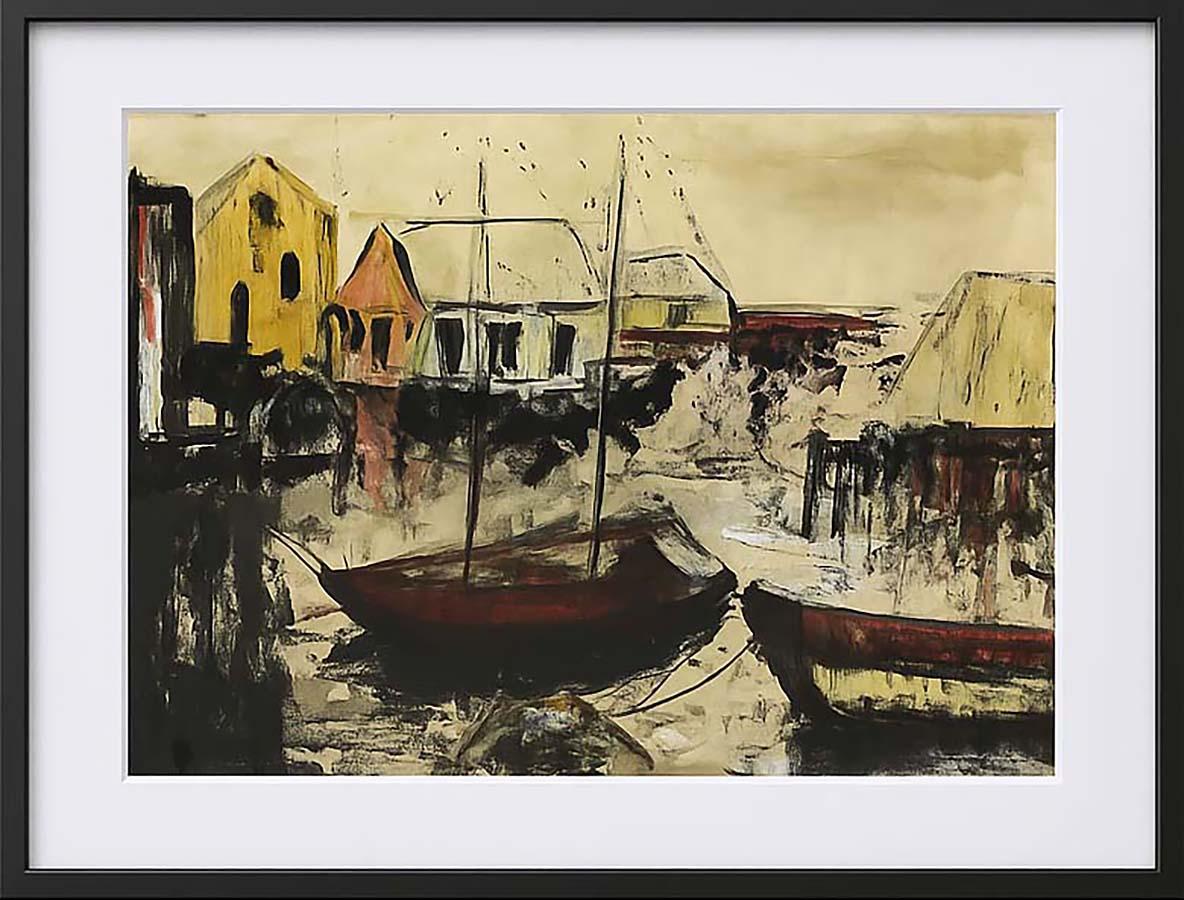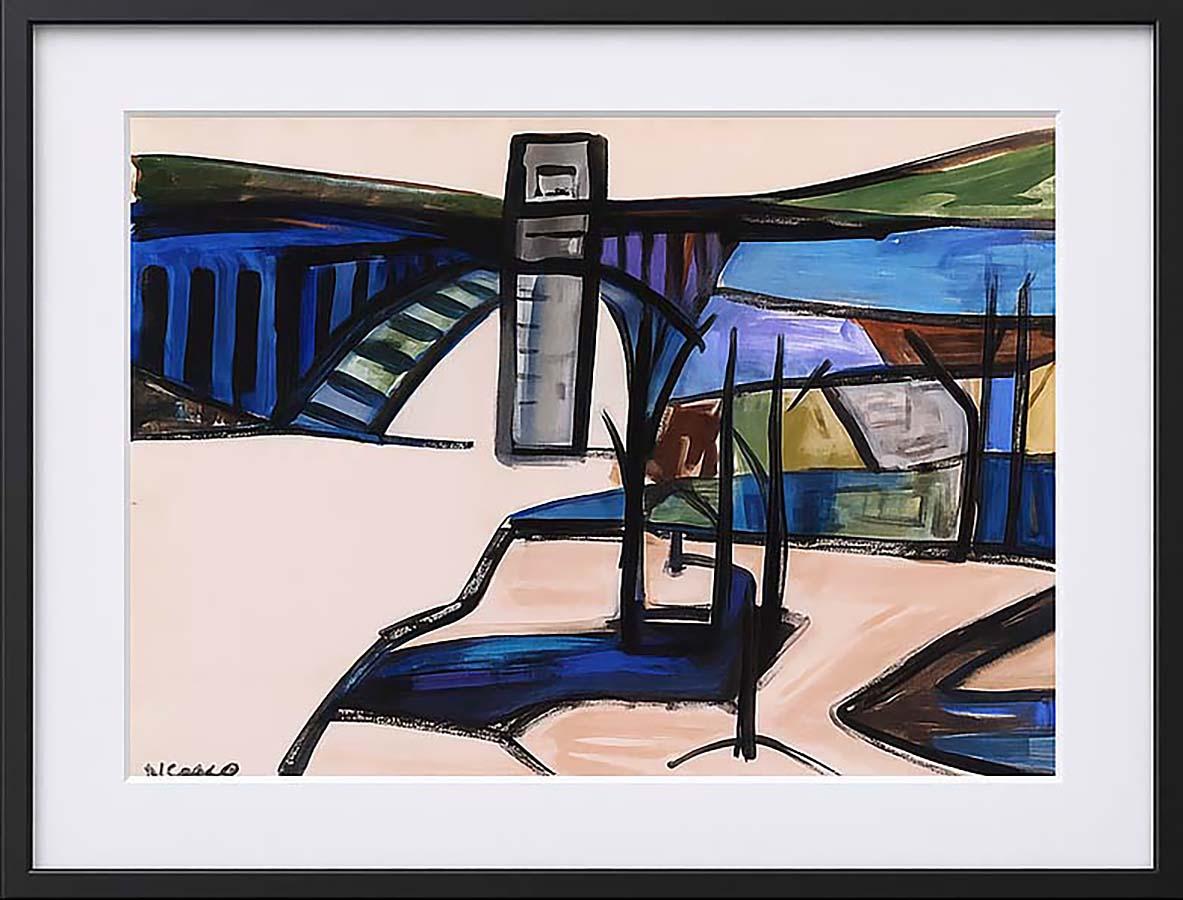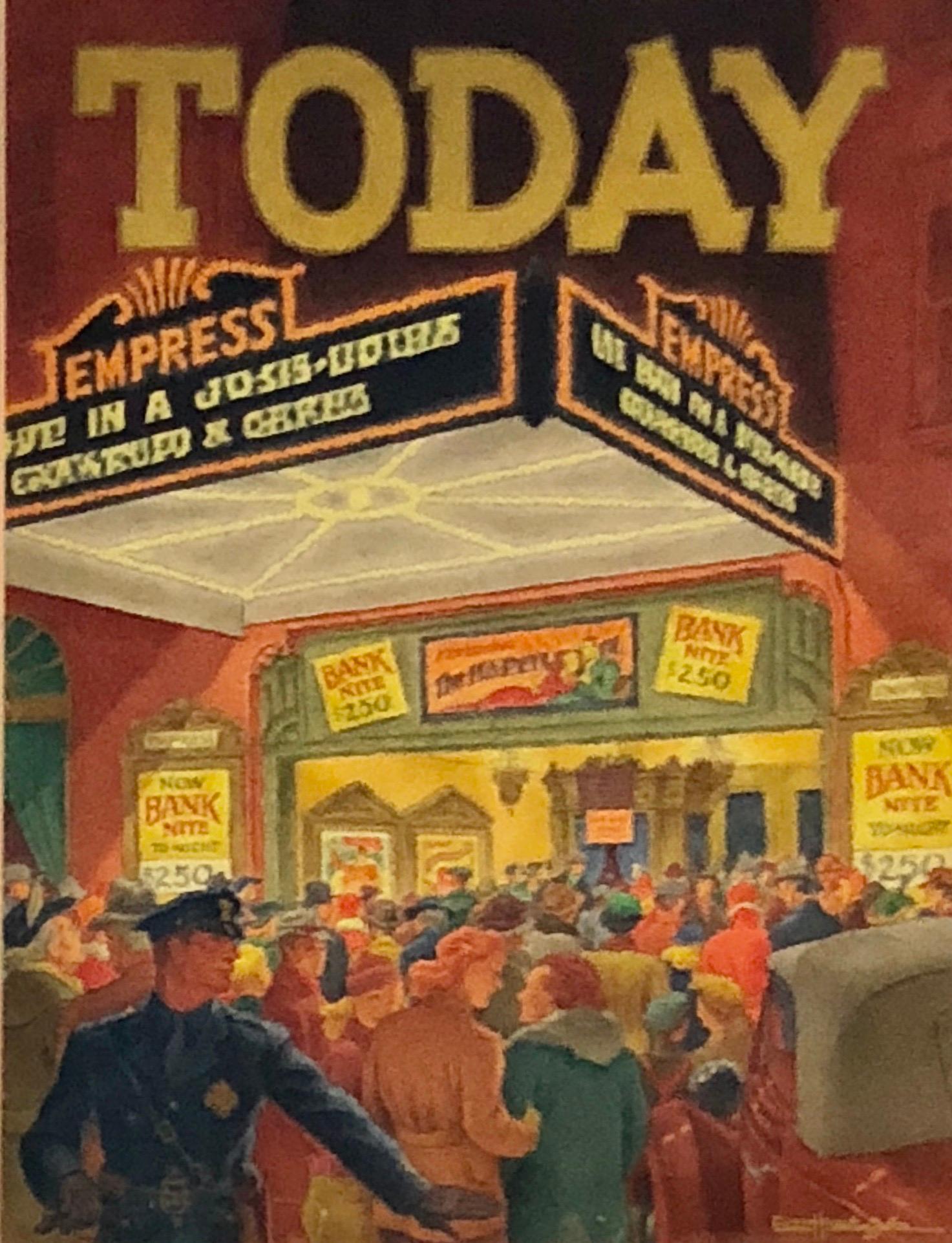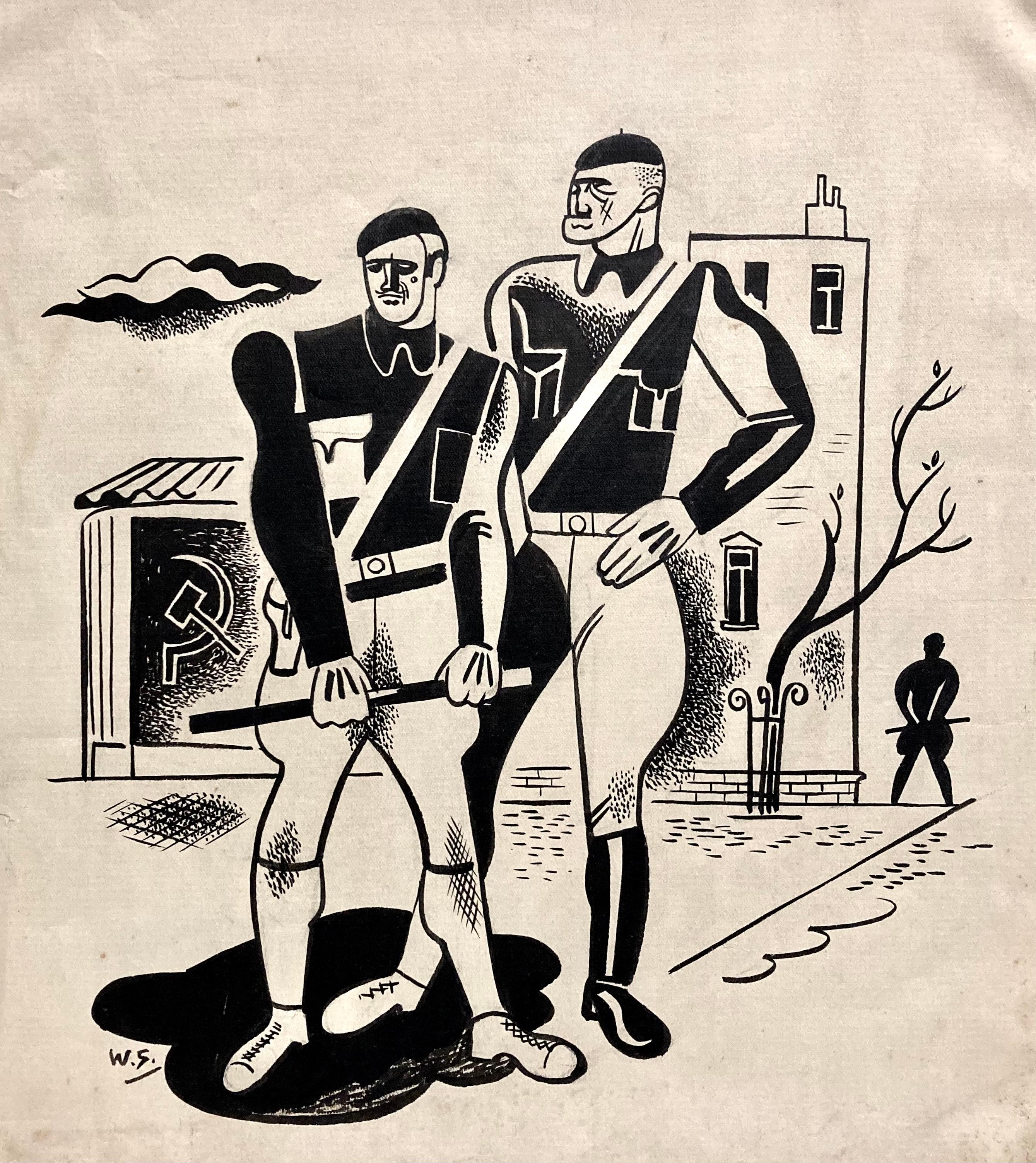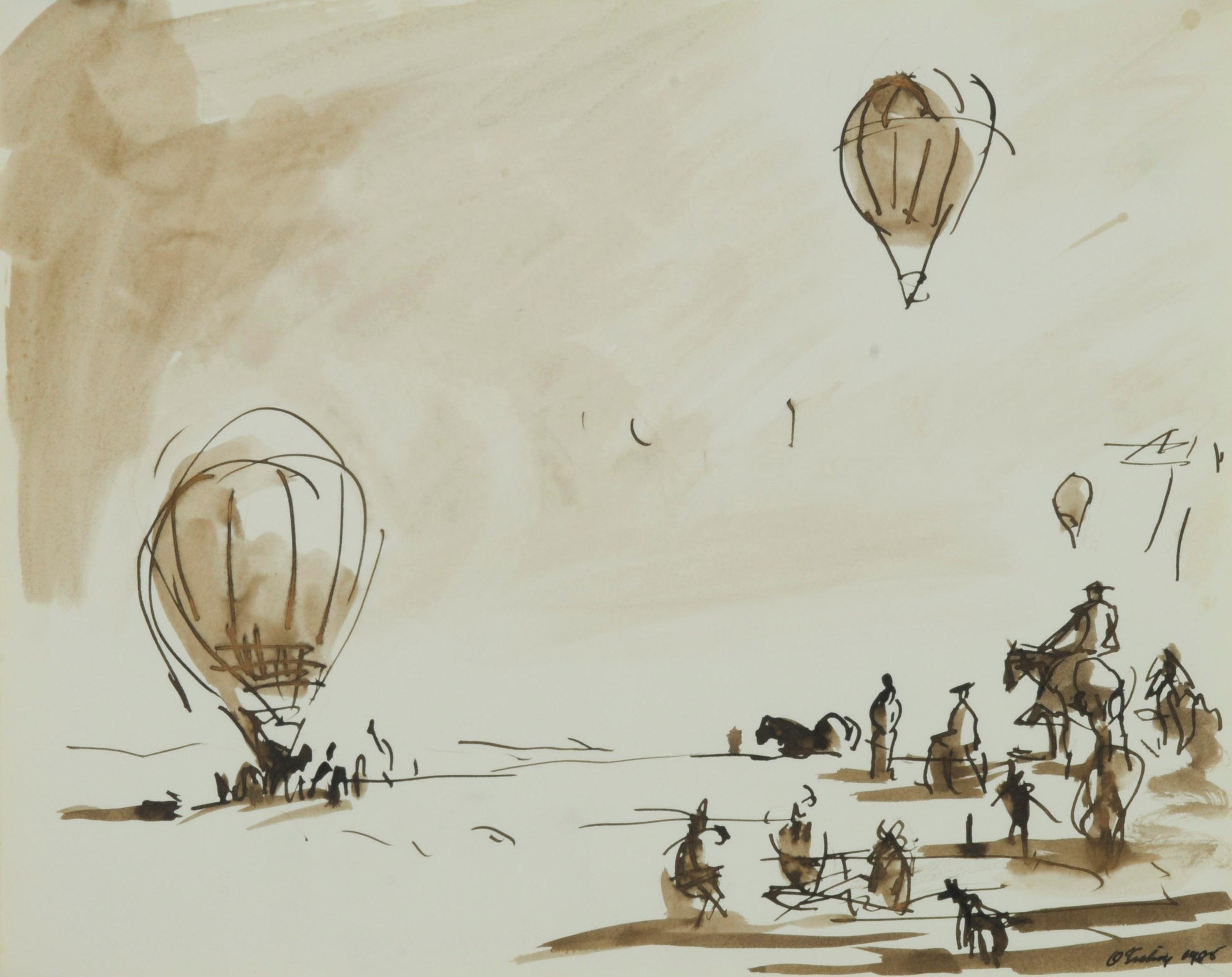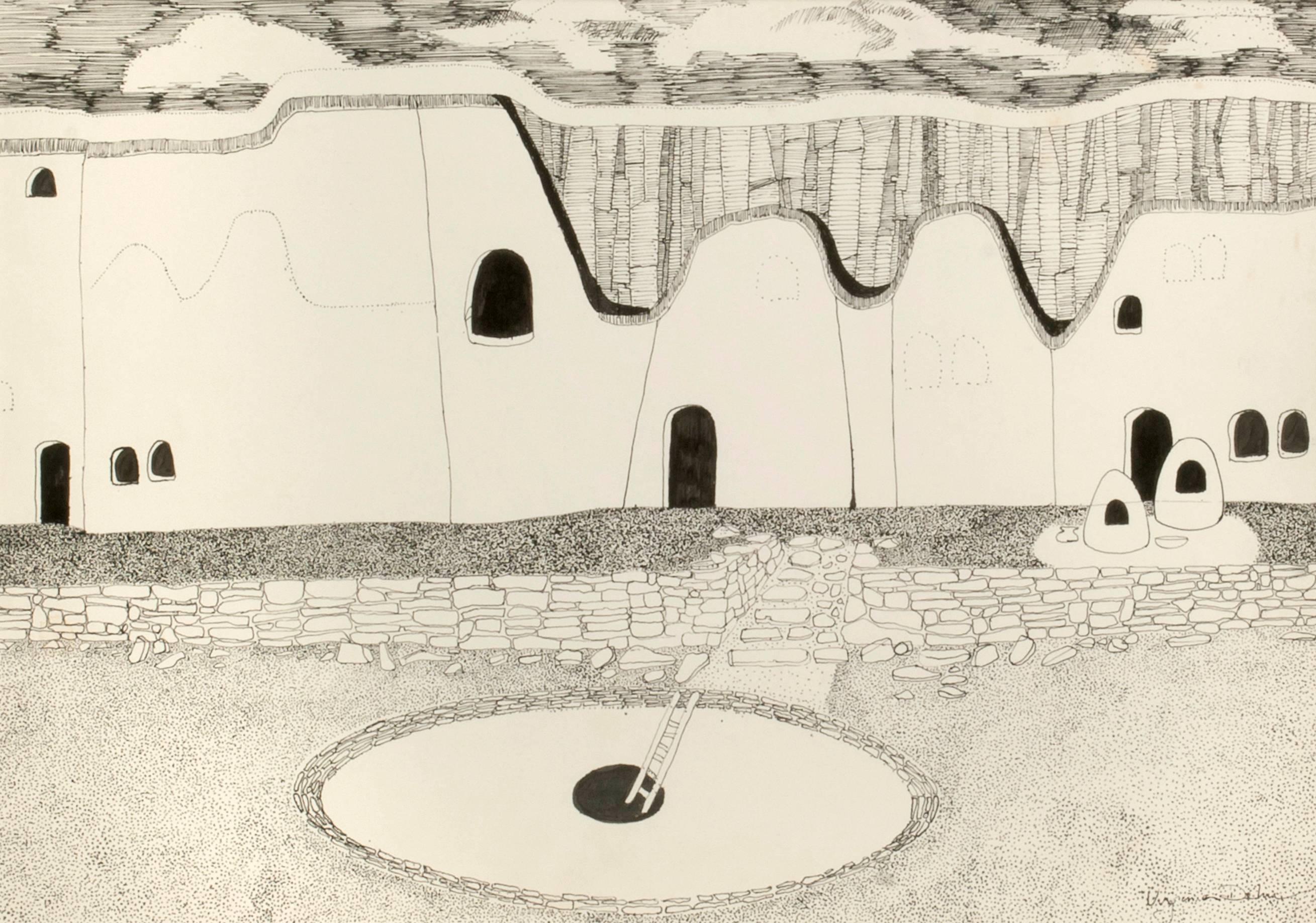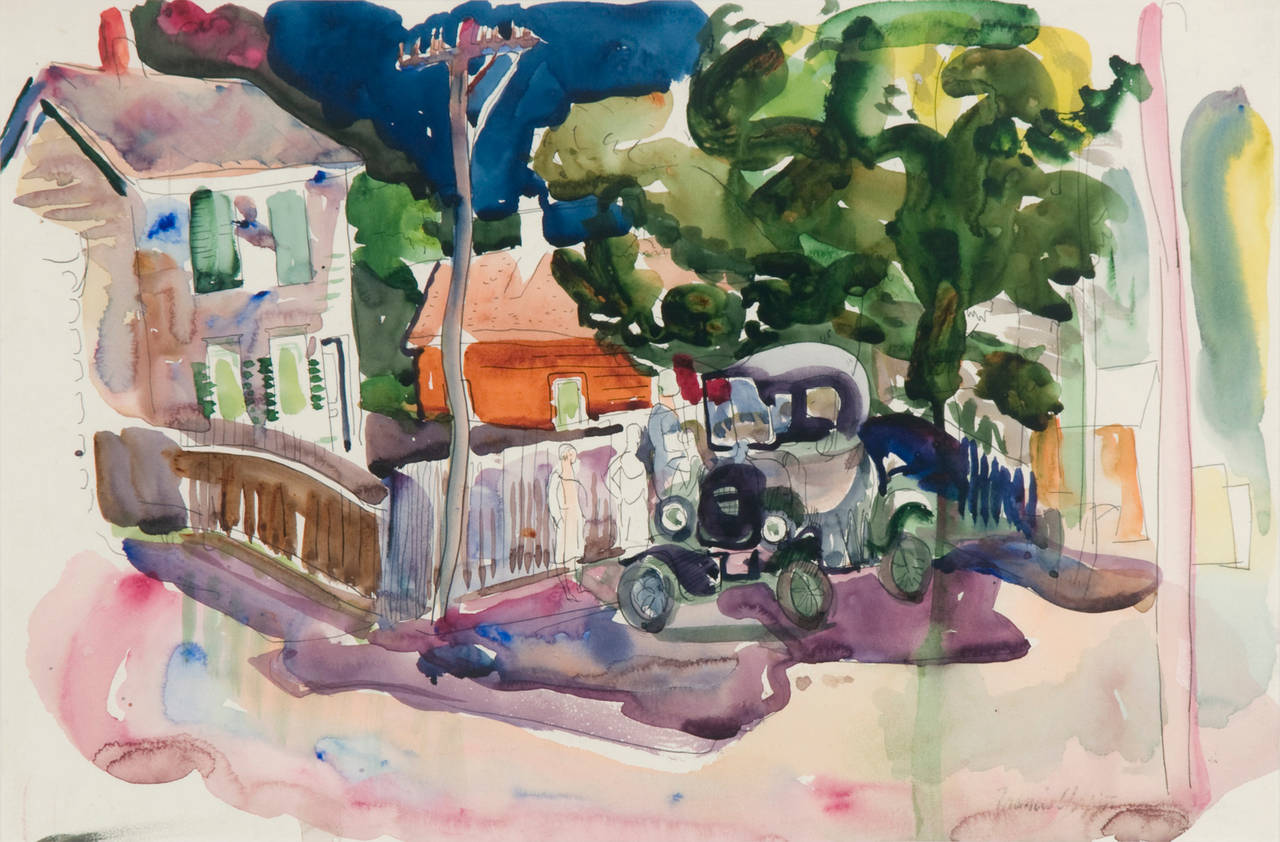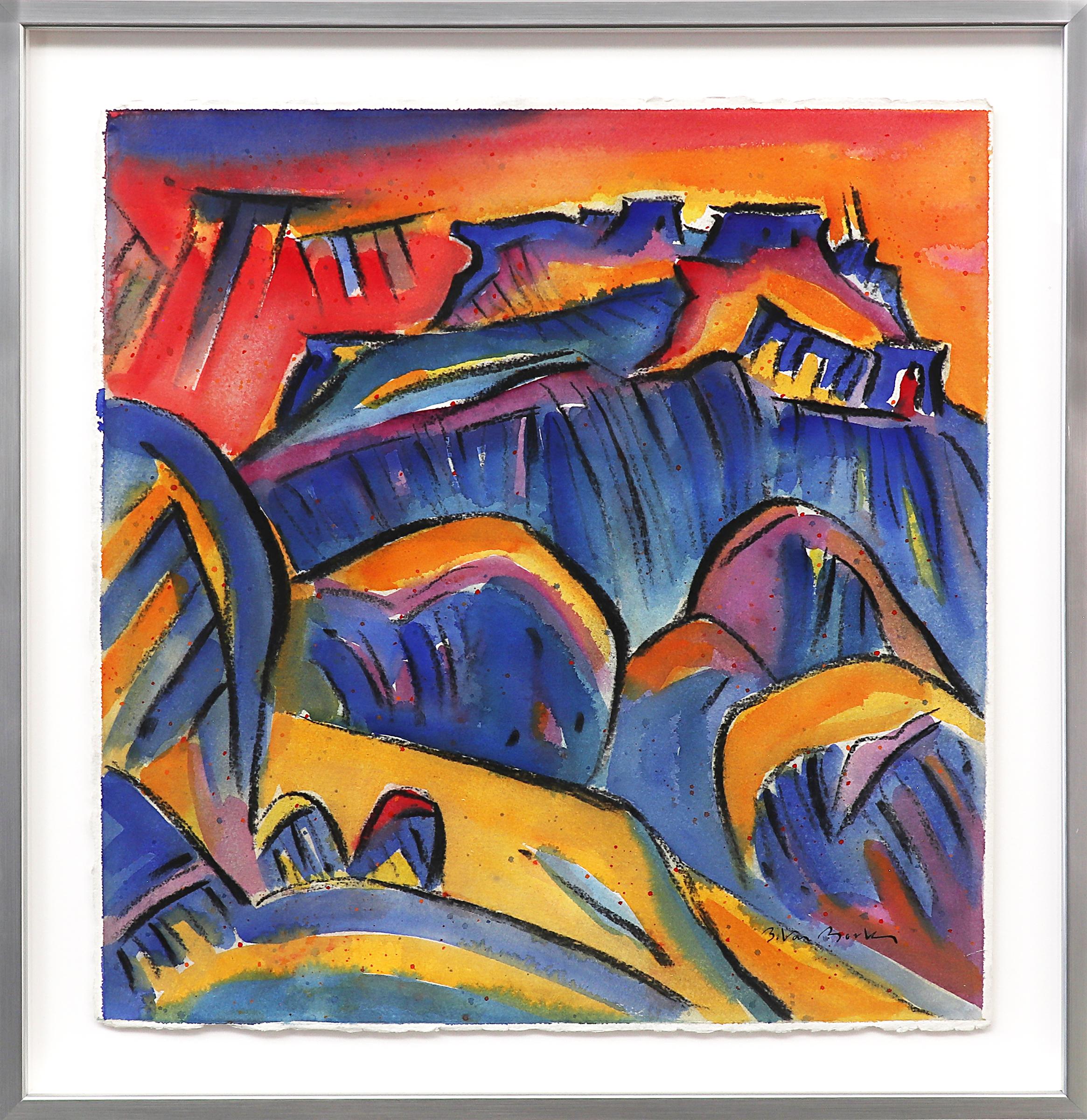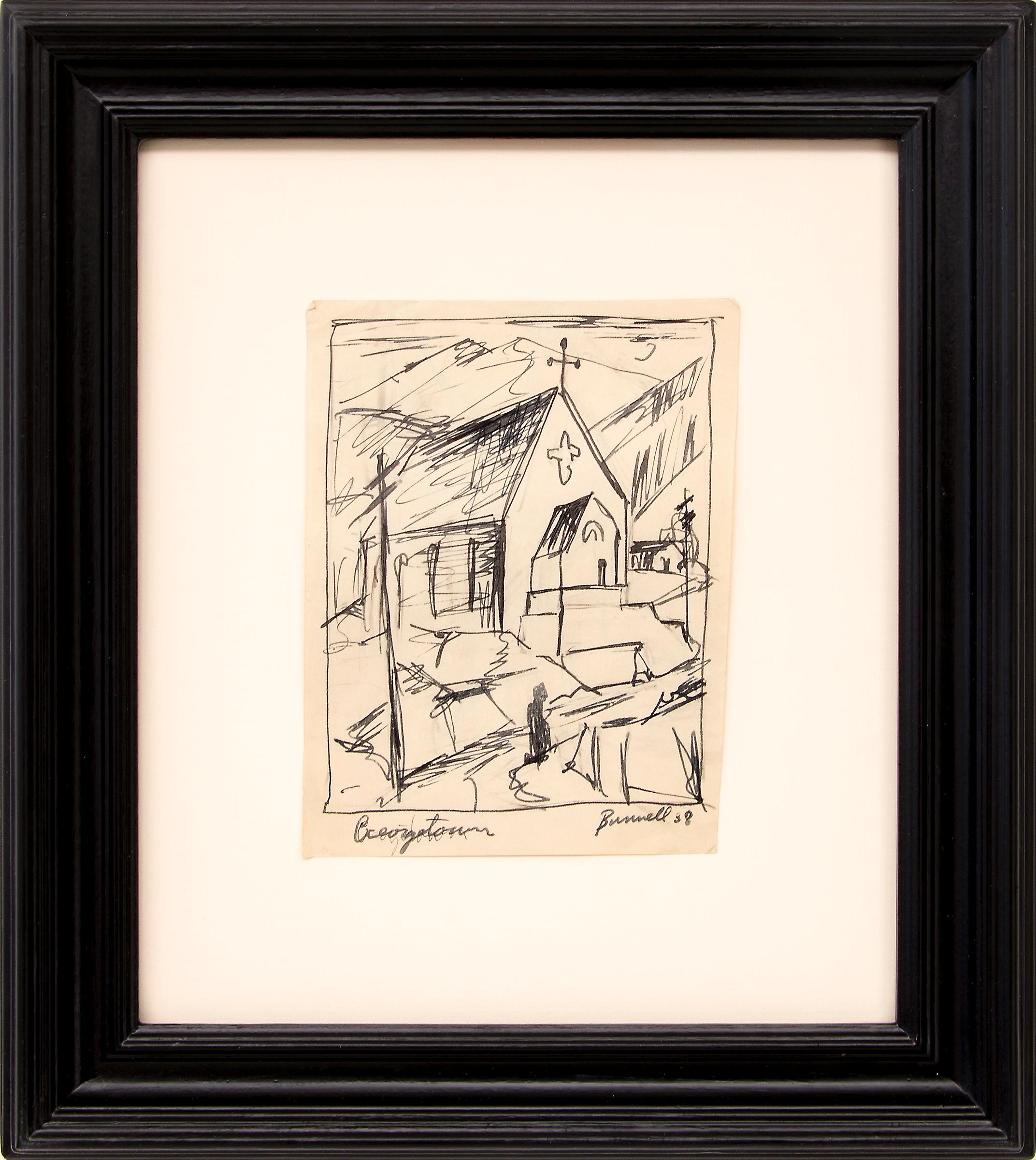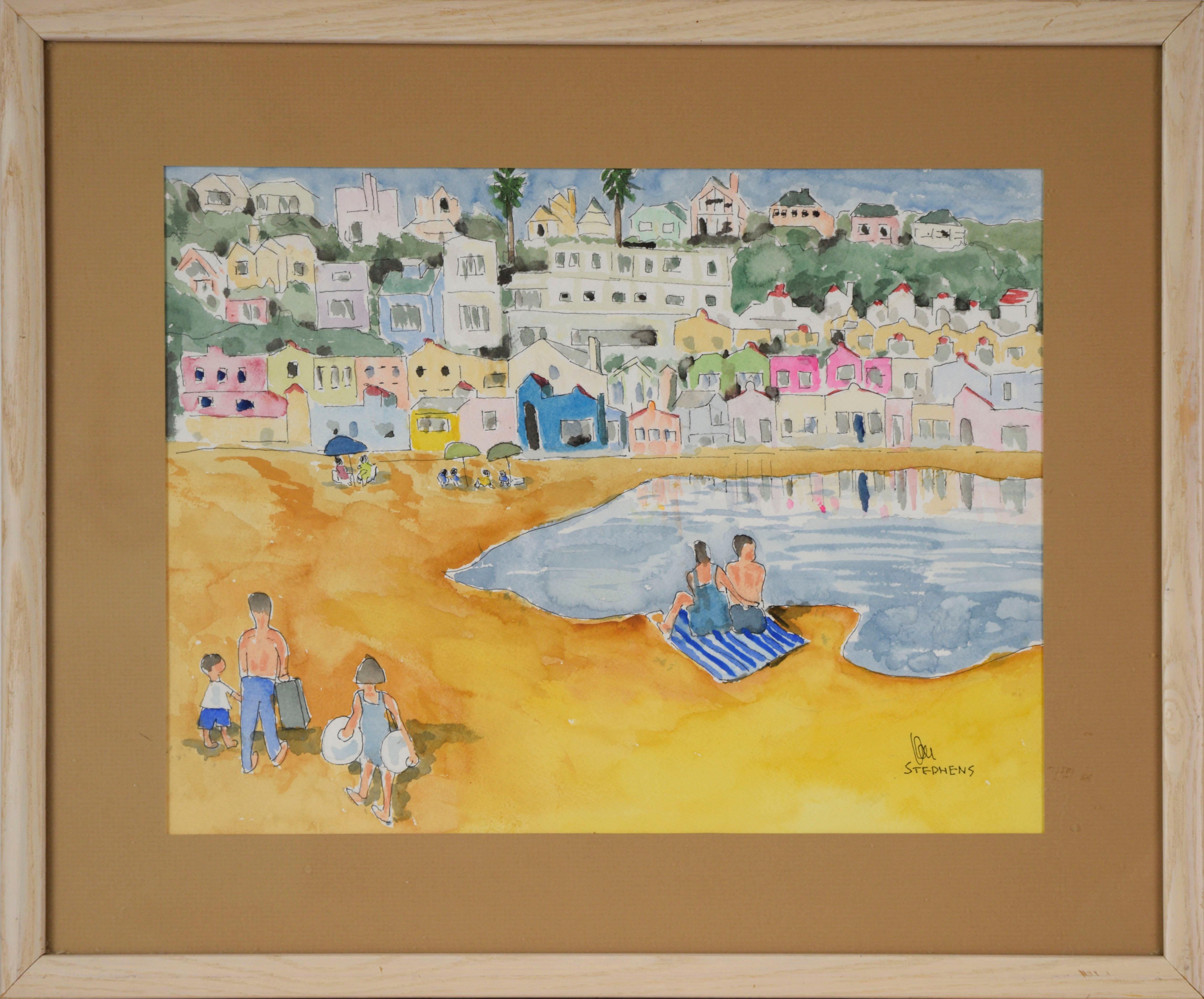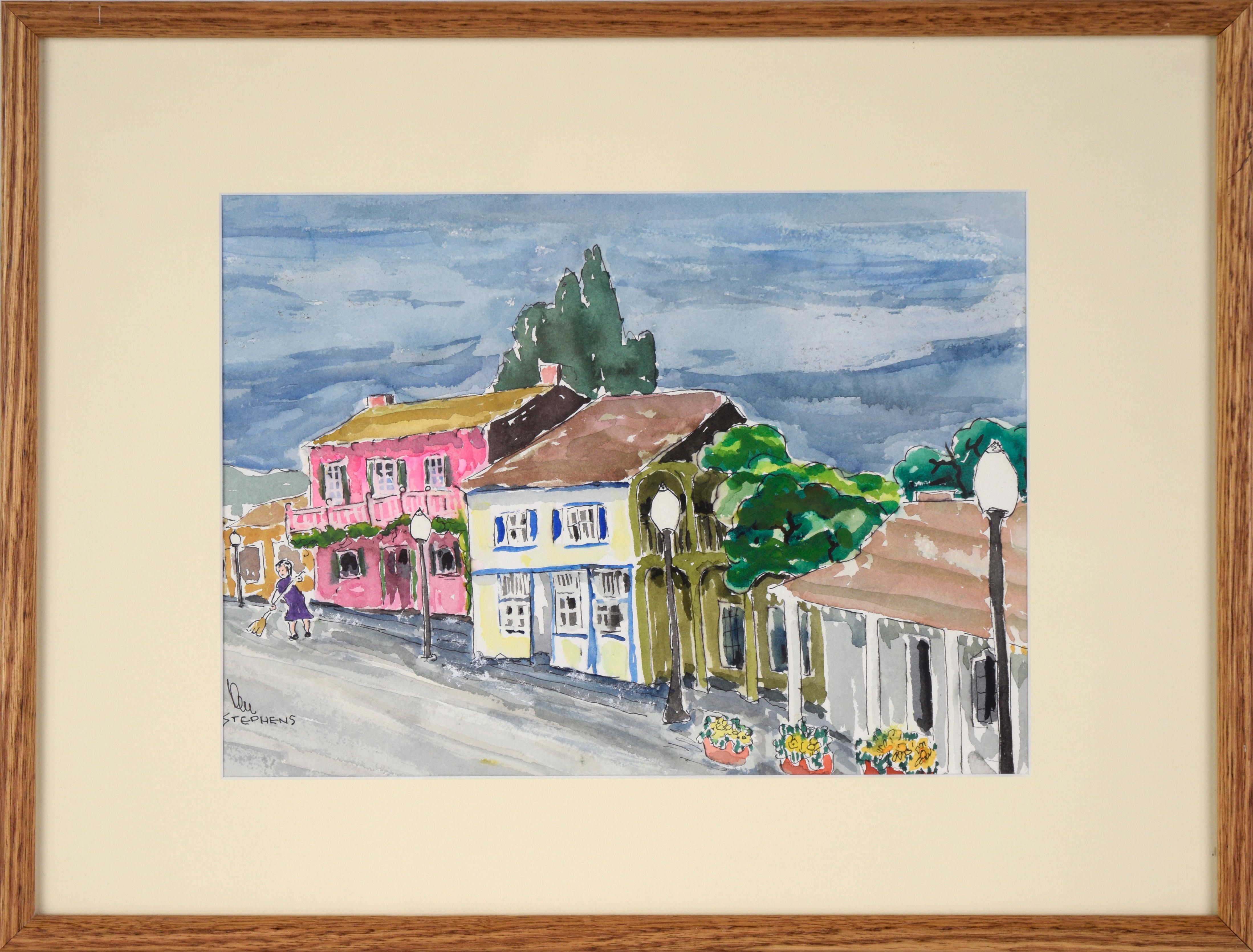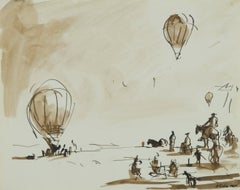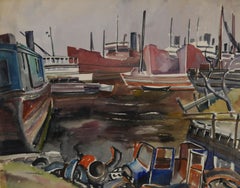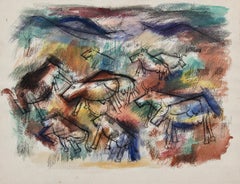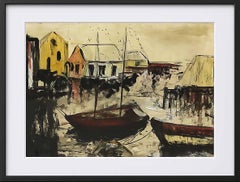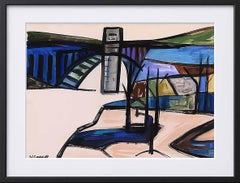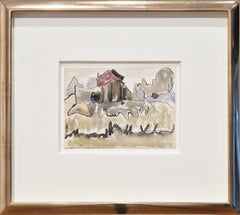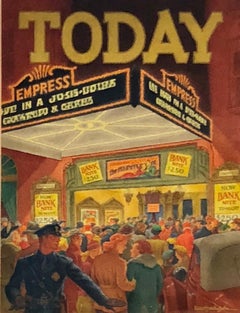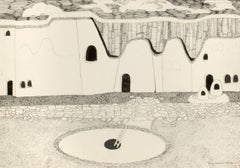
untitled (Pueblo)
Want more images or videos?
Request additional images or videos from the seller
1 of 9
Virginia Dehnuntitled (Pueblo)20th Century
20th Century
$1,850List Price
About the Item
- Creator:Virginia Dehn (1922 - 2005, American)
- Creation Year:20th Century
- Dimensions:Height: 13.13 in (33.36 cm)Width: 18.5 in (46.99 cm)
- Medium:
- Movement & Style:
- Period:
- Condition:
- Gallery Location:Fairlawn, OH
- Reference Number:Seller: AD083421stDibs: LU1409940972
About the Seller
5.0
Recognized Seller
These prestigious sellers are industry leaders and represent the highest echelon for item quality and design.
Gold Seller
Premium sellers maintaining a 4.3+ rating and 24-hour response times
Established in 1978
1stDibs seller since 2013
799 sales on 1stDibs
Associations
International Fine Print Dealers Association
Authenticity Guarantee
In the unlikely event there’s an issue with an item’s authenticity, contact us within 1 year for a full refund. DetailsMoney-Back Guarantee
If your item is not as described, is damaged in transit, or does not arrive, contact us within 7 days for a full refund. Details24-Hour Cancellation
You have a 24-hour grace period in which to reconsider your purchase, with no questions asked.Vetted Professional Sellers
Our world-class sellers must adhere to strict standards for service and quality, maintaining the integrity of our listings.Price-Match Guarantee
If you find that a seller listed the same item for a lower price elsewhere, we’ll match it.Trusted Global Delivery
Our best-in-class carrier network provides specialized shipping options worldwide, including custom delivery.More From This Seller
View AllUntitled (Hot Air Baloon Ascent and Spectators)
By Joseph O'Sickey
Located in Fairlawn, OH
Untitled (Hot Air Balloon Ascent and Spectators)
Sepia wash on wove paper, 1985
Signed and dated in ink lower right corner
From the artist's 1985 sketchbook
Probably a view of Cape C...
Category
1980s American Modern Landscape Drawings and Watercolors
Materials
Ink
untitled (Pueblo)
By Virginia Dehn
Located in Fairlawn, OH
Untitled (Taos Pueblo)
Ink on paper, 1985-1990
Signed by the artist in ink lower right (see photo)
An early New Mexico period work, created shortly after the artist moved from New York.
Provenance: estate of the artist
Dehn Heirs
Condition: Excellent
Image/sheet size: 13 1/8 x 18 1/2 inches
Virginia Dehn
From Wikipedia, the free encyclopedia
Virginia Dehn
Virginia Dehn in her studio in Santa Fe
Virginia Dehn (née Engleman) (October 26, 1922 – July 28, 2005) was an American painter and printmaker. Her work was known for its interpretation of natural themes in almost abstract forms. She exhibited in shows and galleries throughout the U.S. Her paintings are included in many public collections.
Life
Dehn was born in Nevada, Missouri on October 26, 1922.] Raised in Hamden, Connecticut, she studied at Stephens College in Columbia, Missouri before moving to New York City. She met the artist Adolf Dehn while working at the Art Students League. They married in November 1947. The two artists worked side by side for many years, part of a group of artists who influenced the history of 20th century American art. Their Chelsea brownstone was a place where artists, writers, and intellectuals often gathered.
Early career
Virginia Dehn studied art at Stephens College in Missouri before continuing her art education at the Traphagen School of Design, and, later, the Art Students League, both located in New York City. In the mid-1940s while working at the Associated American Artists gallery, she met lithographer and watercolorist Adolf Dehn. Adolf was older than Virginia, and he already enjoyed a successful career as an artist. The two were married in 1947 in a private ceremony at Virginia's parents house in Wallingford, Connecticut.
Virginia and Adolf Dehn
The Dehns lived in a Chelsea brownstone on West 21st Street where they worked side by side. They often hosted gatherings of other influential artists and intellectuals of the 20th century. Among their closest friends were sculptor Federico Castellón and his wife Hilda; writer Sidney Alexander and his wife Frances; artists Sally and Milton Avery; Ferol and Bill Smith, also an artist; and Lily and Georges Schreiber, an artist and writer. Bob Steed and his wife Gittel, an anthropologist, were also good friends of the Dehns. According to friend Gretchen Marple Pracht, "Virginia was a glamorous and sophisticated hostess who welcomed visitors to their home and always invited a diverse crowd of guests..." Despite their active social life, the two were disciplined artists, working at their easels nearly daily and taking Saturdays to visit galleries and view new work.
The Dehns made annual trips to France to work on lithographs at the Atelier Desjobert in Paris. Virginia used a bamboo pen to draw directly on the stone for her lithographs, which often depicted trees or still lifes. The Dehns' other travels included visits to Key West, Colorado, Mexico, and countries such as Greece, Haiti, Afghanistan, and India.
Dehn's style of art differend greatly from that of her husband, though the two sometimes exhibited together. A friend of the couple remarked, "Adolf paints landscapes; Virginia paints inscapes." Virginia Dehn generally painted an interior vision based on her feelings for a subject, rather than a literal rendition of it.] Many of her paintings consist of several layers, with earlier layers showing through. She found inspiration in the Abstract Expressionism movement that dominated the New York and Paris art scenes in the 1950s. Some of her favorite artists included Adolf Gottileb, Rothko, William Baziotes, Pomodoro, and Antonio Tapies.
Dehn most often worked with bold, vibrant colors in large formats. Her subjects were not literal, but intuitive. She learned new techniques of lithography from her husband Adolf, and did her own prints. Texture was very important to her in her work. Her art was influenced by a variety of sources. In the late 1960s she came across a book that included photographs of organic patterns of life as revealed under a microscope. These images inspired her to change the direction of some of her paintings. Other influences on Dehn's art came from ancient and traditional arts of various cultures throughout the world, including Persian miniatures, illuminated manuscripts, Dutch still life painting, Asian art, ancient Egyptian artifacts...
Category
Early 20th Century American Modern Landscape Drawings and Watercolors
Materials
Ink
Staten Island
By Robert Hallowell
Located in Fairlawn, OH
Staten Island
Watercolor on paper, c. 1928
Signed with the Estate stamp lower left
Sheet size: 19 1/8 x 23 7/8 inches
Titled on verso
Part of small series of watercolors done of the ...
Category
1920s American Modern Landscape Drawings and Watercolors
Materials
Watercolor
Cows in a Field (Recto) Two Figures in an Interior (Verso)
By Louis Schanker
Located in Fairlawn, OH
Cows in a Field (Recto)
Two Figures in an Interior (Verso)
Watercolor on heavy textured paper, 1938
Signed in ink verso image of Two Figures, unsigned ...
Category
1930s American Modern Landscape Drawings and Watercolors
Materials
Watercolor
untitled (Rocks along the Coast)
By William C. Grauer
Located in Fairlawn, OH
untitled (Rocks along the Coast)
Gouache and watercolor on paper, c. 1950
Signed with the estate stamp signature lower left (see photo)
This is a preliminary study for a large exhibition painting...
Category
1950s American Modern Drawings and Watercolor Paintings
Materials
Gouache
The Duomo, Florence
By Donald Shaw MacLaughlan
Located in Fairlawn, OH
The Duomo, Florence
Watercolor, 1914
Signed and dated lower center edge (see photo)
Florence Cathedral, formally the Cattedrale di Santa Maria del Fiore, is the cathedral of Florence, Italy. It was begun in 1296 in the Gothic style to a design of Arnolfo di Cambio and was structurally completed by 1436, with the dome engineered by Filippo Brunelleschi.
Condition: Excellent
Image size: 16 3/4 x 14 1/2 inches
Frame size: 24 1/4 x 22 inches
Donald Shaw MacLaughlan was born in Charlottetown, Prince Edward Island, Canada on November 9, 1876. His family moved to Boston, Massachusetts in 1890 where he began to experiment with different art media; watercolor, oil painting and finally, etching – with a few attempts at lithography. He spent much of his early years at the Boston Public Library studying the work of printmakers, from Durer and Rembrandt to the 18th century English, French and Italian masters.
Like many American artists of the time MacLaughlan traveled to Europe to study in Paris, enrolling in the Ecole des Beaux Arts and studied further with Jean Leon Gerome and Jean Paul Laurens. In 1899 he began producing etchings, which became his major interest until his death in 1938. He became acquainted with James NcNeill Whistler (1834-1903) and other artists who created etchings and spent time studying the etchings of Rembrandt van Rijn (1606-1669) and other old masters in the collection of the Bibliothèque Nationale. Both Rembrandt and Whistler would have major influences on his art. In 1900 he created a set of 25 etched views of Paris and in 1901 exhibited two etchings in the Salon de la Société Nationale des Beaux-Arts. He returned to the U.S. in 1903, then went back to Paris the following year.
He traveled extensively in Europe, visiting England, Switzerland, Italy and Spain as well as various locales in France. His etched views of Venice were well-known. MacLaughlan exhibited views of Paris, Rouen, Normandy and Italy in 1906 in a solo show at the American Art Association Galleries in Paris. He also displayed his work in the 1906 exhibitions of the Société Nationale des Beaux-Arts and the Société des Peintres-Graveurs Français. MacLaughlan even instructed other expatriate Canadian artists then living in Paris, most notably Clarence...
Category
1910s American Modern Landscape Drawings and Watercolors
Materials
Watercolor
You May Also Like
Watercolor Painting American Modern Painting Gloucester Harbor Female Artist
Located in Buffalo, NY
Dorothy Rivo
Gloucester Harbor, c. 1950s
Watercolor and ink on paper
Framed dimensions: 34 in. H × 30 in. W
Contemporary black frame with white archival mat
In Gloucester Harbor, Dorothy Rivo captures the gritty beauty of a working port with expressive brushwork and tonal depth. The scene unfolds in loose washes of ochre, rust, and charcoal, where weathered boats float before a jagged row of fishing sheds and coastal structures rendered in gestural lines.
Rather than striving for topographic precision, Rivo offers a painterly impression of the harbor—moody, atmospheric, and undeniably alive. The smudged foreground, dripping masts, and clouded sky convey both movement and memory, as if the harbor were emerging from a dream or dissolving into one.
Executed in watercolor and ink, this piece shows Rivo's command of mixed media and her deft ability to balance structure with spontaneity. It is a standout example of mid-century American waterfront painting...
Category
1940s American Modern Landscape Drawings and Watercolors
Materials
Archival Ink, Watercolor, Archival Paper
Watercolor Painting American Modern Painting Bridge Harbor Female Artist 1950
Located in Buffalo, NY
Dorothy Rivo
Untitled (Bridge Tower), c. 1960s–70s
Acrylic on paper, floated in a mat
Framed dimensions: 30 in. H × 24 in. W
Contemporary walnut or black wood frame with white archiv...
Category
1940s American Modern Landscape Drawings and Watercolors
Materials
Archival Ink, Watercolor, Archival Paper, Acrylic
The Other Farm
By Arthur Dove
Located in London, GB
This quaint and reflective work features delicate and inky lines depicting a farmhouse nestled within a cool-toned watercolour landscape. Muted red brick, almost silver bluish greys,...
Category
Mid-20th Century American Modern Landscape Drawings and Watercolors
Materials
Ink, Watercolor
Price Upon Request
Magazine Cover Illustration Mid 20th Century Modern Theatre Broadway Realism WPA
By Ernest Hamlin Baker
Located in New York, NY
Magazine Cover Illustration Mid 20th Century Modern Theatre Broadway Realism WPA
Ernest Hamlin Baker (1889 – 1975) “Today Magazine” Cover ...
Category
1930s American Modern Figurative Drawings and Watercolors
Materials
Gouache, Paper, Watercolor, Ink
William Sanderson, Fascists
By William Sanderson
Located in New York, NY
Latvia-born William Sanderson became a contributor to the New Yorker and New Masses magazines during the 1930s. He was drafted into the Army during World Wa...
Category
1940s American Modern Figurative Drawings and Watercolors
Materials
India Ink
Untitled
By Francis Chapin
Located in Dallas, TX
Francis Chapin was one of the most celebrated painters in Chicago during his lifetime. When he was a young art student, Valley House founder, Donald Vogel, painted with "Chape" on th...
Category
1930s American Modern Landscape Drawings and Watercolors
Materials
Ink, Paper, Watercolor
Recently Viewed
View AllMore Ways To Browse
City Street Painting
Painted Wood Sculpture
Vintage Again And Again
Oil Painting Water
Architecture And Landscape Painting
Oil Painting Set
Streets Of Paris
Dark Landscape Art
Unknown Antique Painting
Oil Painting Of Man
Abstract Expressionist Oil
Impressionist Paris
Framed Nude
Japanese Framed
French Illustration
Framed Oil Painting Paris
Luminous Art
Textured Wall Art
